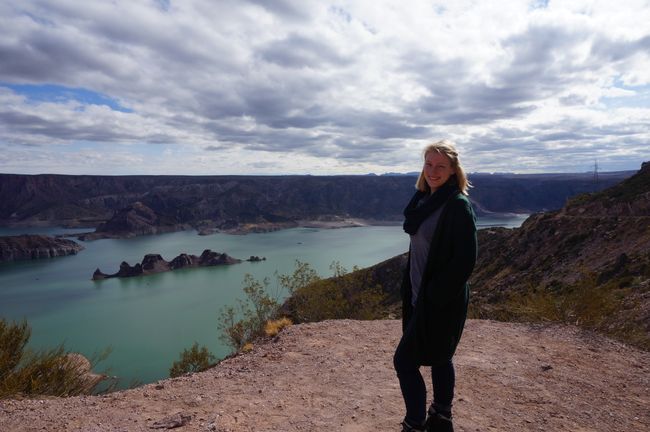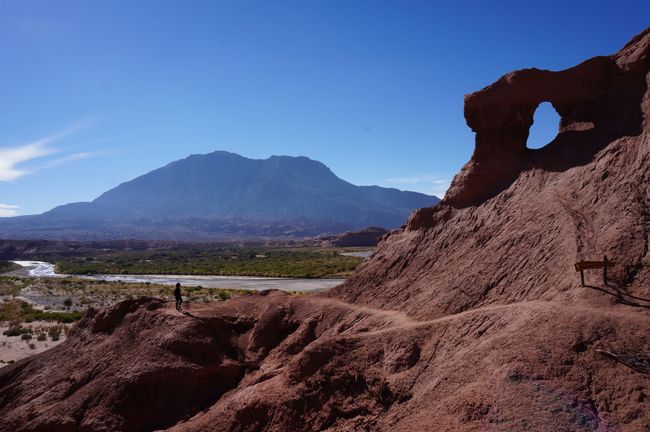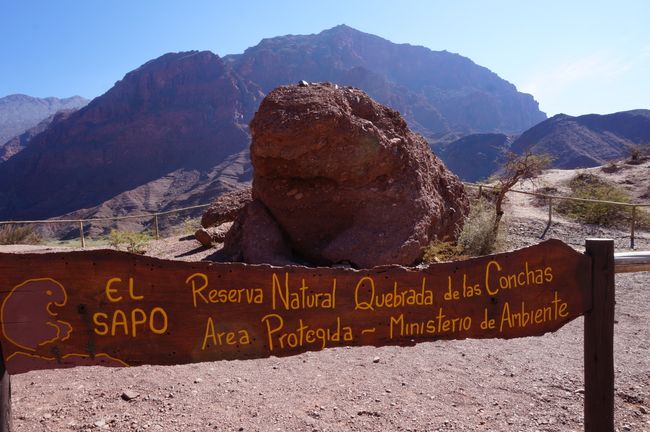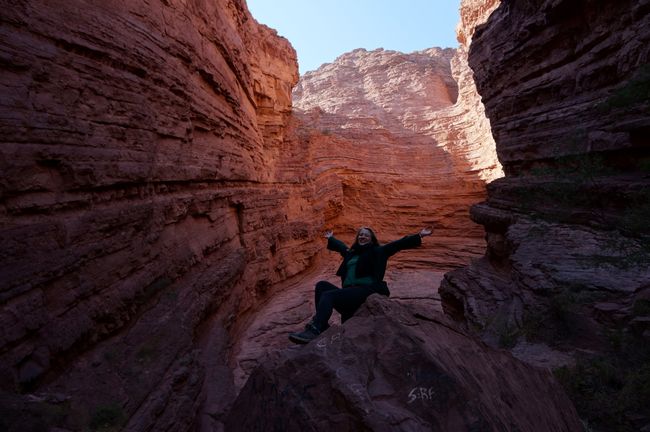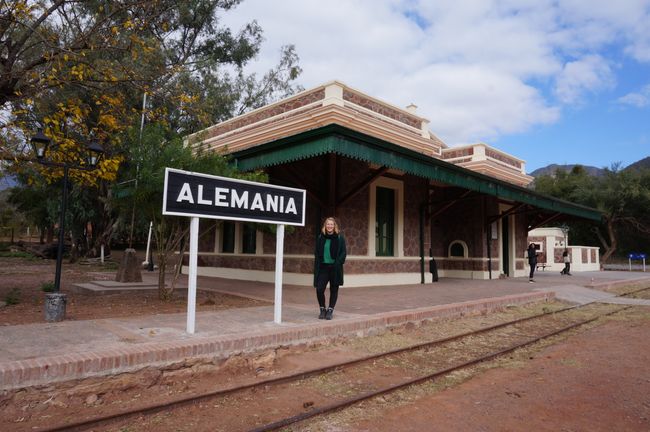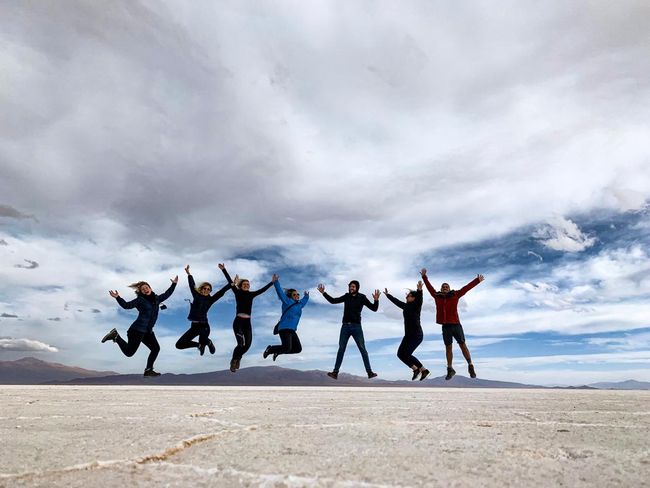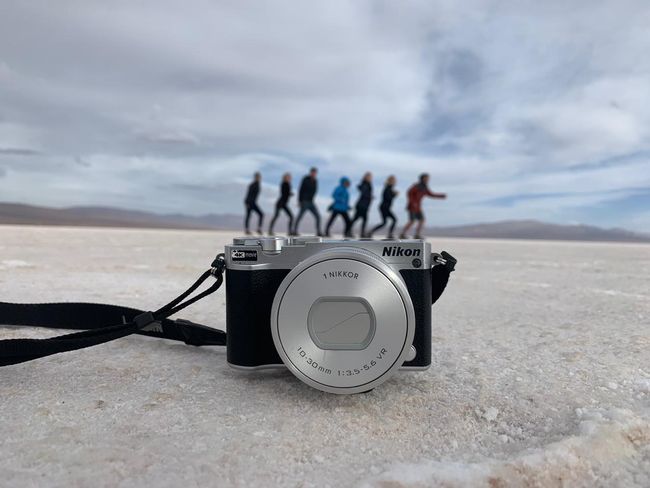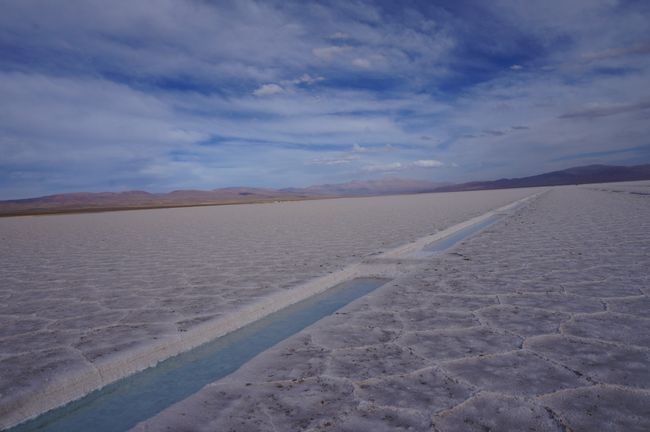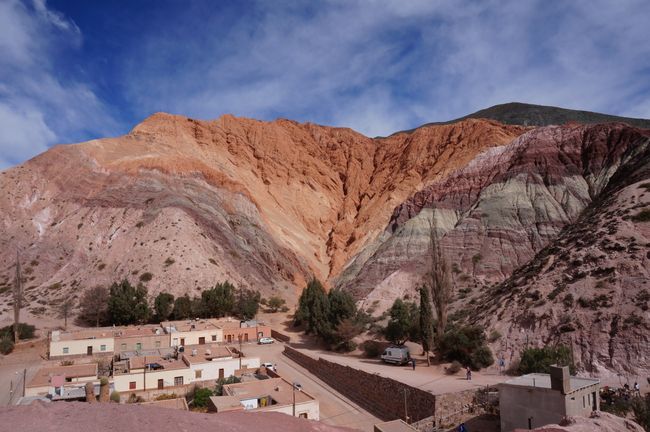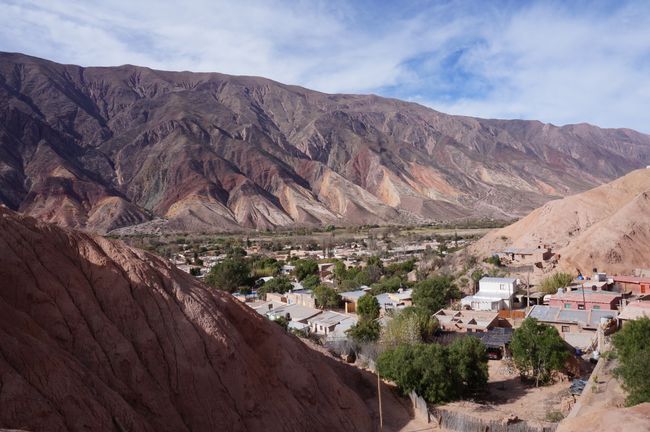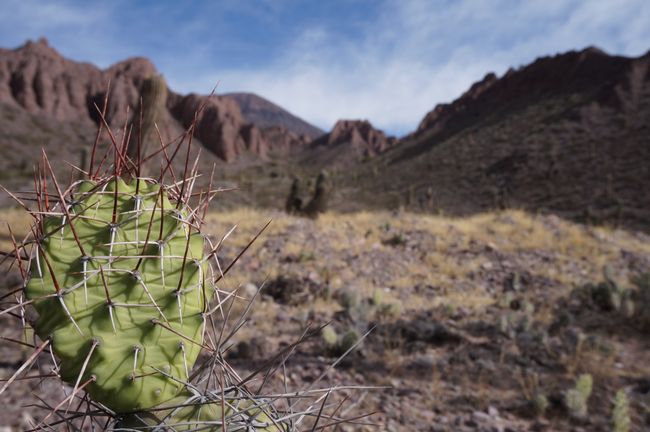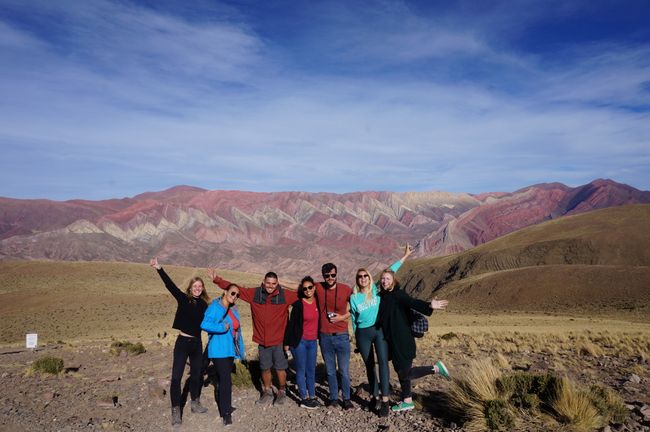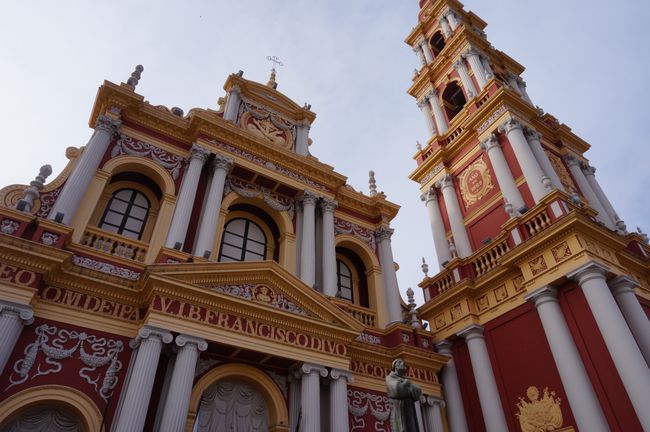¡Hasta la vista, Argentina!
Veröffentlicht: 16.06.2019
Newsletter abonnieren
DEUTSCH
Nach insgesamt 14 Tagen Buenos Aires, 6 Tagen in Cordoba bzw Mendoza und 10 Tagen Patagonien fand der argentinische Abschnitt meiner Reise in Salta und Jujuy ein sympathisches und buntes Ende.
Schon auf dem 36-Stunden-Busweg (am Ende 38h) von Puerto Madryn, welches an der Südostküste Argentiniens liegt, nach Salta, welches im Nordwesten Argentiniens liegt, haben wir mehrere Klimazonen durchfahren. Im kalttrockenen Patagonien besteht die Flora und Fauna hauptsächlich aus Gebüschen und Lamas. Im Norden wie bsp. Salta geht das Klima in dichtere fast tropische Vegetation mit bunten, felsigen Bergen über. In Jujuy, der Grenzregion zwischen Salta und Bolivien, sammeln sich Kaktusse auf Regenbogenfelsen.
Mit Hilfe von Couchsurfing, Facebook und der Free Walking Tour als Sammelpunkt haben wir Reisende gefunden mit denen wir Autos mieten konnten um drei Tage die Region zu erkunden. 6 Nationalitäten waren in unseren zwei Autos vertreten. Ganz nach dem Motto "Europa unterwegs" fuhren wir von Dorf zu Dorf, dessen Namen von mal zu mal schwerer auszusprechen wurden. Tilcara. Humahuaca. Hornocal. Purmamarca. Gefolgt von El Cafayate (nicht zu verwechseln mit El Calafate in Patagonien) und einem kleinen Dorf das tatsächlich Deutschland also "Alemania" heist. Der Name kommt daher, dass hier die Eisenbahn endet die angeblich von Deutschen erbaut wurde.
Die Absprache von 7 Leuten mit 2 Autos verlief überraschend komplikationslos. Sodass wir zu viert weiter nach Uyuni, Bolivien gereist sind.
Zuletzt noch zwei Nerd Exkurse. Ich bin ja eigentlich Chemikerin.
Exkurs #1: Regenbogenberge
Die Quebrada de Humahuaca wurde in etwa in der Zeit geformt in der Dinosaurier gelebt haben. Die unterschiedlichen Farben, 7 bei Pulmamarca und 12 bei Hornocal, können in bis zu 33 Farbtöne unterschieden werden. Die Farbtöne kamen durch die unterschiedlichen Mineralgehalte während der Sedimentation zustande. Rote Farben enthalten verschiedene Oxidationsstufen von Eisen, Gelb von Schwefel, Beige/Sand sind Silicaten und Grün und Blau kommt durch Kupferionen zustande.
Exkurs #2: Salina Grande
Der Salzsee "Salina Grande" ist ebenfalls durch kosmische Bewegungen entsanden. Hierbei hat sich ein Tal gebildet in dem sich das salzhaltige Wasser des naheliegenden Vulkanes gesammt hat. Durch die Verdampfung ist eine bis zu 10 Meter dicke Salzschicht entstanden. Dabei trocknet das Salz in natürlicher Form in Fünf oder Sechsecken. Da in dem Salz kein Iod vorhanden ist und auch keine Fossile gefunden werden konnten, liegt die Vermutung nahe, dass der See nie mit dem Meer verbunden war.
Das Salz wird auf drei Arten genutzt. Ganze Blöcke werden aus dem Salz geschnitten um Häuser zu bauen aber typischer für Lecksteine in Tiernahrung. Die zweite Option ist kurz nach der Regensaison das Oberflächeneis abzuschaben. Diese Salz kann in der Industrie oder als Steusalz verwendet werden. Die dritte Option ist eine Art Becken zu graben in dem das Wasser so salzig ist, dass Salzkristalle entstehen, die jährlich geerntet werden. Diese Salzkristalke müssen vor dem Verzehr jedoch mit Iod versetzt werden.
So das wars von mir.
Hasta luego.
Eure Dory
ENGLISH
After a total of 14 days in Buenos Aires, 6 days in Cordoba and Mendoza and 10 days in Patagonia the argentinian part of my travel found a sympathic and colorful end in Salta and Jujuy.
In the 36-hour-bustrip (in the end 38h) from puerto madryn at Argentinians southeast coast to Salta in Argentinias northeast, we crossed several climate zones. The cold and dry climate of Patagonia leads to a flora and fauna mainly consisting bushes and lamas. In the North say Salta the climate becomes green and more densly planted almost tropical with rocky mountains. In Jujuy, the bordering region in between Salta and Bolivia, the kactus is the most common plant on colorful rainbow mountains.
Via Couchsurfing, Facebook and the free walking tour as a meeting point we managed to find travellers who were willing to rent cars with us to go and discover the region. 2 cars, 7 people, 6 nationalities and plenty of villages. Tilcara. Humahuaca. Hornocal. Purmamarca. El Cafayate (not to be mistaken for El Calafate in Patagonia) and "Alemania". Yes, there is a village called Germany. Apparently because the railway, which was build by germans endet here. Travelling with 7 people went surprisingly easy without extreme misunderstandings. We continued our trip to Uyuni in Bolivia. Now travelling in a group of four.
At the end i want to add 2 science excurses, since i am still a chemist.
Excurs #1: Rainbow Mountains
The Quebrada de Humahuaca was formed in the same time as dinosaurs lived. The different colours, 7 in Pulmamarca and 12 in Hornocal, can be distinguished into 33 tones. The colors are formed by the different contents of minerals in the sedimentation layer. Red tones come from iron oxides, yellow from sulfur and silicate and green and blue due to copper.
Exkurs #2: Salina Grande
The saltlake "Salina Grande" was made by tectonic movements. The created valley collected the salt containing mineral water of the volcano nearby. No found fossils and the leak of iod in the salt prooves that the lake was never connected to the sea. For a better stability the salt dries in pentagones and hexagones.
The salt is used in three ways. Blocks can be cut out from the ice to be added in animal nutrition or to build houses. The second option is to use the surface salt after the wet season for industry or in winter against the ice. The third option is to form a small pool. The water inside is so salty that crystals are formed and farmed after a year. However, the salt has to be modified in order to add iod.
That s all from me
Hasta luego
Dory
Newsletter abonnieren
Antworten
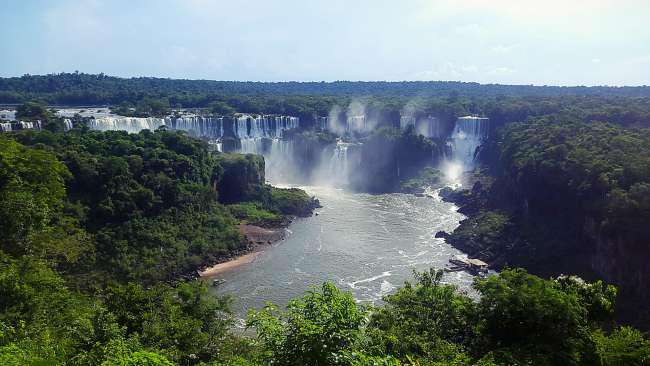
Reiseberichte Argentinien

